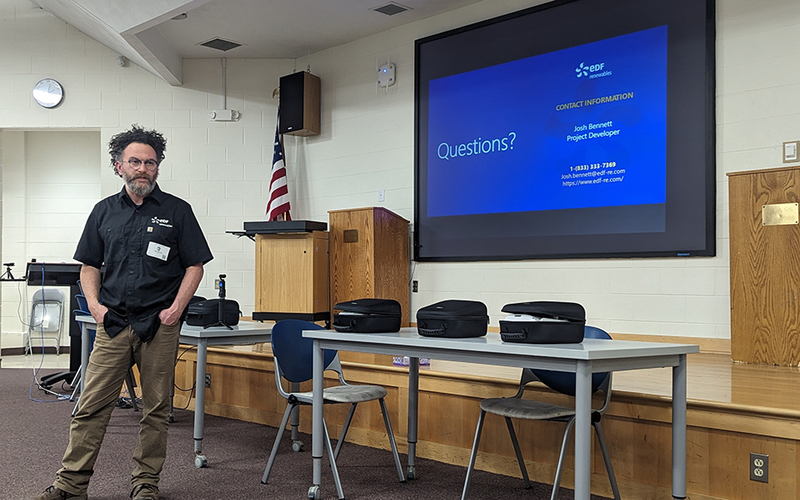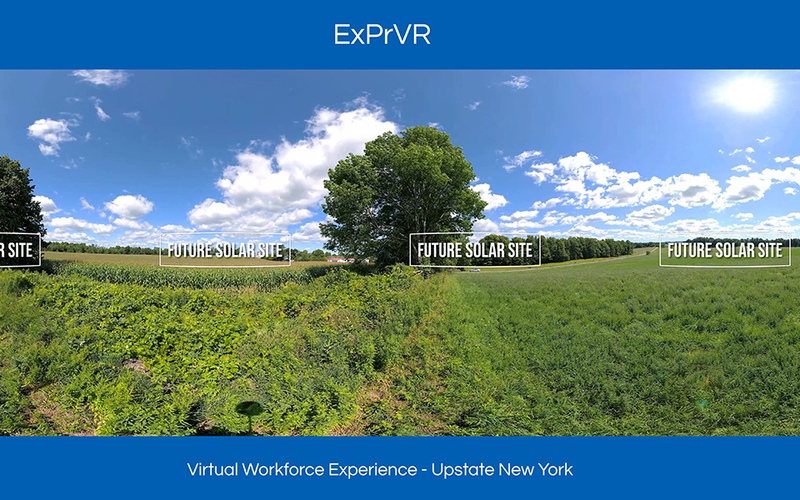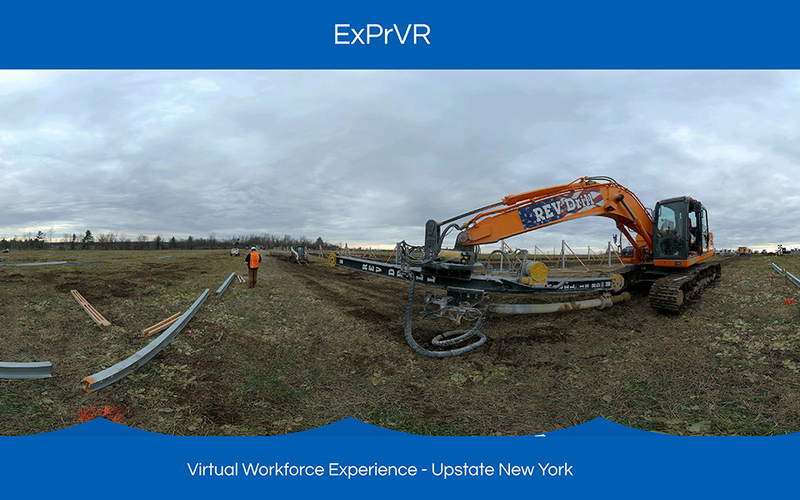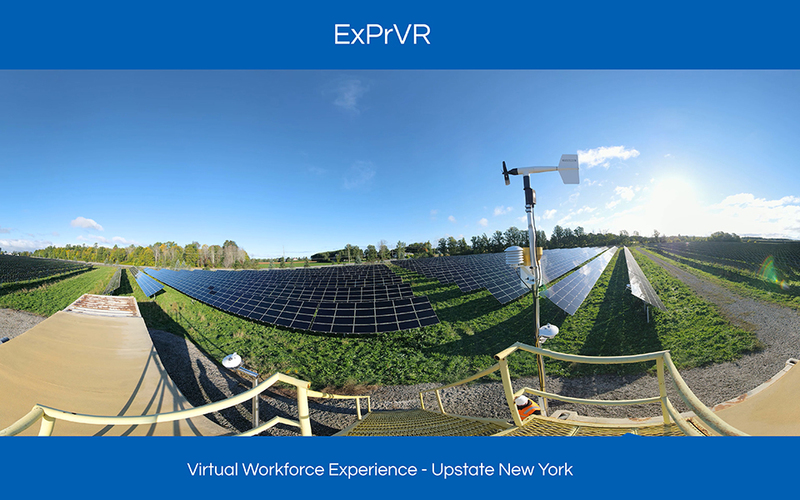On Tuesday, Feb. 14, CVA ecology classes and ecology club members learned about solar power technology, careers in solar energy, advances in combining agriculture with solar projects, and the challenges of siting solar projects.
Project Developer Josh Bennett and intern Courtney LaRocca of EDF Renewables( EDFR) (EDRF) shared the solar industry's and their company's efforts to move New York toward the state's goal of 70 percent renewable energy by 2030.
Mr. Bennet noted that as systems advance toward electrified power, one of the biggest challenges to expanded electric power is the need for an efficient, reliable, and interconnected power grid. The U.S. is divided into power distribution regions, each with its own electric grid. Currently, those systems are not interconnected and cannot move excess power from one region to another.
Transmission can also be a problem within a region. Because the energy supply industry does not presently have the capacity to store large amounts of power, each watt of electricity generated needs to flow immediately into transmission lines. This is true for all solar installations, whether large-scale projects and solar panels on a home. That means companies must site solar installations near transmission lines that have available capacity.
A recent advance for the local solar and agricultural industries is a cooperative agrivoltaics study with Cornell University. This study identified farming opportunities that could co-exist with solar panels. Matching solar sites with compatible agricultural opportunities keeps agricultural land in production, a major concern in rural communities. Not all agriculture is suitable on a solar site. The study shows that a farmer could graze sheep or Aberdeen or lowline cattle on a solar panel site without risk to the equipment or animals. Dairy or goats, however, risk damage to the equipment. Researchers also recognized that grazing animals reduce the need for mowing and property maintenance, reducing the risk of damage from mowers and trimmers. They also identified opportunities to raise native blooming plants for honeybees and honey production. Other opportunities include certain row crops such as tomatoes and celery that thrive under the partial shade of the panels. Agrivoltaics draws much of it research from work done in Colorado and Oregon. A creative example of a successful agrivoltaic project is Jack's Solar Garden. EDFR recognizes that climate and local markets are different, so the company has partnered with a variety of partners to determine which crops would be viable locally.
Solar projects also represent economic opportunity for landowners, residents, and local taxpayers. Property owners lease the land to the solar company, but retain ownership. Under the agrivoltaic model, those lease payments could be the financial boost that enables a farmer to continue farming. Construction adds as many as 300 local jobs, from equipment operators and welders to electricians and wildlife biologists. Mr. Bennett said the construction site could support a food truck and other local dining establishments for two years. Once the facility is operational, an additional five people are needed for repairs and maintenance. Local taxpayers benefit from the PILOT agreement (payment in lieu of taxes between the company and local municipalities and schools, helping offset the local tax burden.
Despite the many positives, some people have concerns.
Mr. Bennett said he tries to address those concerns as they arise. He listed his responses to the most common questions concerning solar power. Agrivoltaics ensures farmland preservation. Proper siting reduces or eliminates project visibility. Local studies and conversations with hunters lessens the impact on area wildlife.

During and after the presentation, he fielded questions from the students and the faculty present. He addressed the current level of renewable energy in New York (about 28 percent), local opposition to solar projects, and the effect on wildlife and hunting.
EDFR is currently working on a project in the Town of Columbia. This 350 MW facility would generate enough electricity to power 80,000 average U.S. homes. It would involve 1,800-2,000 acres, with roughly 25 percent used for solar panels and the remainder for buffer areas and setbacks.
EDFR's visit was arranged by the Expertise Project (ExPr). ExPr attempts to narrow the gap between students and local employers. The group works to introduce students to the people and careers that exist in their own communities. Equally important, ExPr shows students what skills they need for those jobs and how to build those skills. A local economy is only as strong as the jobs it provides, and local businesses only exist when there is a skilled workforce.
Expertise Project representatives set up six sets of virtual headsets. The headsets provided students with a 360 degree view of a solar installation during various stages of construction. Following are portions of three of the images (Note: The images are distorted because they are mean to be viewed with a virtual headset.)




